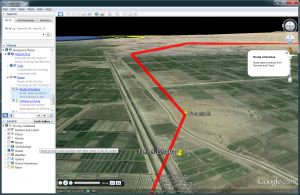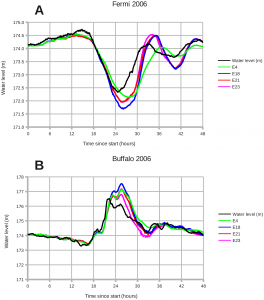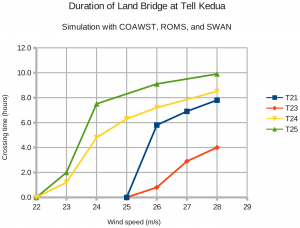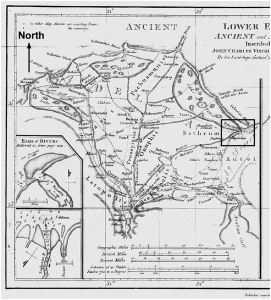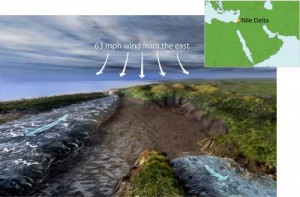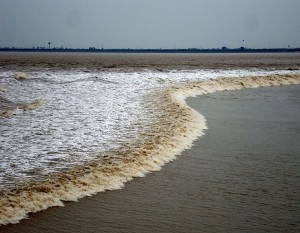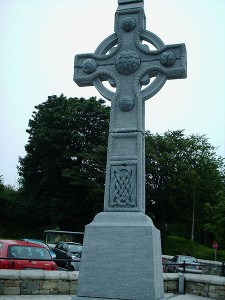I have published my first book! The title is:
Between Migdol and the Sea: Crossing the Red Sea with Faith and Science
The book describes in greater detail the research about wind setdown that I published at PLoS ONE four years ago. The biblical context for Between Migdol and the Sea is Exodus 14: the narrative of Moses parting the waters of the yam suf at God’s command. The first two chapters tell what it might have been like to be present on that fateful night, with the east wind howling and the Egyptian chariot force in hot pursuit.
The book presents the Tanis hypothesis, which is my designation for the crossing site at the Kedua Gap in the eastern Nile delta. The Exodus occurred in the time period 1251 – 1245 BC. There were not millions of Hebrews who crossed the Red Sea, but approximately 35,750 men, women, and children in the departing company. Between Migdol and the Sea provides evidence for the historicity of the Exodus; although mythical elements have been added to the original account in later retelling, the departure from Egypt and the Red Sea crossing really happened. I provide latitude-longitude coordinates and maps so that readers can examine these places for themselves.
These scientific details are woven through a story of scientific discovery; from making an embarrassing mistake during my first semester of graduate school, to finding an old map in the University of Colorado Library, to discovering Open Access publishing. The world reacted to the PLoS ONE paper with every emotion from enthusiasm to hostility. The book concludes with a chapter explaining how faith and science are compatible and should be in harmony.
I hired a free-lance editor to review the text. Other friends read portions of the book and give me their comments. Technical details about the ocean model were published at the peer-reviewed scientific journal PLoS ONE in two papers.
Miracles
I see no need for physical laws to be suspended in order to make the waters part and leave a dry passage across the yam suf. The COAWST ocean model calculates a physical scenario that is consistent with the narrative in Exodus 14. A coastal lagoon (ancestral Lake Manzala) shifts to the west under wind stress and splits around a peninsula, leaving a temporarily dry land bridge with water on both sides of the Israelites.
The miracle is in the timing; a fortuitous weather event arrives at the right moment to deliver Moses and his company from destruction. In similar fashion, the Apostle Peter knew that Jesus had directed the miraculous catch of fish (John 21:1-14), even though the law of gravity remained constant throughout the Galilee event. Of course the crossing of the Red Sea is a miracle!
LibreOffice for Book Writing
Printed books are complicated. Do you know what is a book’s “trim size”? Do you know what image “bleed” means? Do you know the difference between the gutter margin and the edge margins? I didn’t know these things a couple of months ago; now I do.
I created the book entirely with LibreOffice, including the print layout. I wrote each chapter as a separate document, then combined them with a Master document that supplied the title pages and publisher’s page. Since Between Migdol and the Sea is a technical scientific book, I included figures, tables, citations in each chapter, and an overall Index at the back of the book. At times I wished I were writing some Flames of Desire romance novel, so I wouldn’t have all these extra elements to deal with. But LibreOffice was suitable for the task. From time to time I did Google for hints about how to accomplish certain publishing tasks that puzzled me.
A couple of lessons for anyone who wants to Indie Publish a technical book:
- It’s okay to compose the text in 8.5×11 size paper, but you should create your figures in the 6×9-inch trim size from the beginning. Line drawings scale pretty well; labels do not. Same thing for tables.
- Try to do things the standard way that book publishers do them. Get a comparable book and examine it closely. I thought it would be easier on the reader to group my citations for each individual chapter into a compact list of References at the end of the chapter. That way each chapter reads like a complete published paper. Maybe LibreOffice can do this, but I could not figure it out. So I ended up with a single multi-page Bibliography containing all my references at the end of the book before the Index, just like everybody else does it.
CreateSpace at Amazon.com
Although I value what literary agents and book publishers can contribute to the publication process, for reasons of timing I chose the Independent Publishing route. I selected Amazon’s CreateSpace as my self-publishing platform for Between Migdol and the Sea. CreateSpace worked out well for me.
The basic approach is to create one PDF to represent the entire book interior in black-and white, and a second PDF to represent the book cover in color. CreateSpace must handle a lot of indie authors, because they have a well-polished web site and an extensive user community. I answered a few of my questions by poking around in the user forum.
The CreateSpace web tools reminded me of PLoS ONE; there always seemed to be a check box or option or help message to get you what you need. This is unlike the traditional scientific journals, who leave it up to the author to figure out how to generate a tiff image file. CreateSpace has templates for the book size and cover, and an automated reviewing tool to look over your interior PDF before printing the first proof. After some fiddling and multiple uploads, my manuscript started to look like a real book!
I am still working to prepare the Kindle version.
Print On Demand
A traditional publisher makes a “print run” of several thousand books and then offers them for sale through various outlets (mail order, bookstores). I’ll make up some numbers here for illustration: let’s say that each book in the print run costs the publisher $5. The initial setup costs for a print run are high, but the marginal cost of each book is low, so they have to print thousands of books to keep the cost per unit down. If the book costs $20 list price, then everyone in the chain can make some money, including the author.
The problem with a print run is inventory. The publisher may have thousands of printed books in storage until they (hopefully) sell. Bookstores have to keep books in stock. If the author and publisher want to release a new edition, they have to wait until all the unsold inventory is cleared out of the pipeline. Inventory can pose a problem.
Print On Demand (POD) is an online printing technology whereby each individual book is printed when an order is received. When the online reader (that’s you) clicks the Purchase button, some electronic printer in some light manufacturing facility downloads the cover PDF and interior PDF, prints them out, automatically folds the cover around the pages, glues them together, and cuts them off to the trim size – Ka-Chunk! Then the completed book slides down a chute along with the mailing label. Some human being wraps the book and ships it, or maybe the packaging is automated, too.
Let’s say that each Printed On Demand book costs the publisher $10 to manufacture. (I don’t think POD can be as cheap as a multi-thousand-book print run, but maybe someday.) The book has to have a list price near $20 to compete with the traditional publishing method. There appears to be less money for everyone in the POD publishing chain, but there are no expensive warehouses full of expensive inventory any more. That’s how Print On Demand can compete with traditional print runs.
Furthermore, CreateSpace can afford to take a chance on unknown first-time independent authors like me, because they don’t have to risk getting stuck with thousands of unsold books. And that is why Indie Publishing has gained some traction in the book publishing industry.
